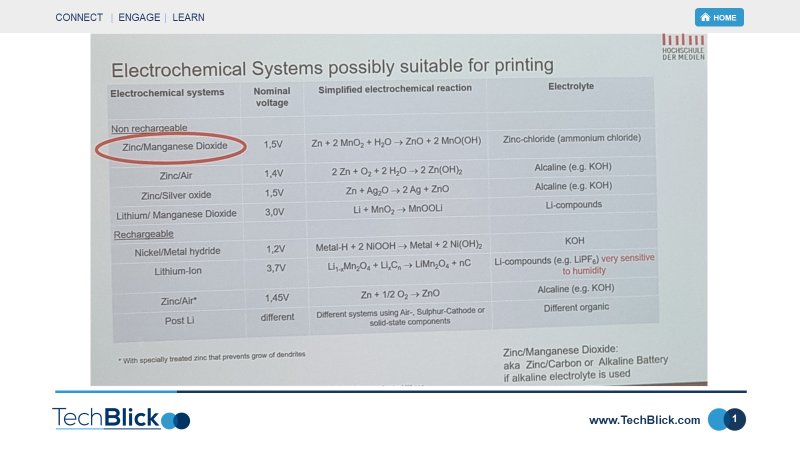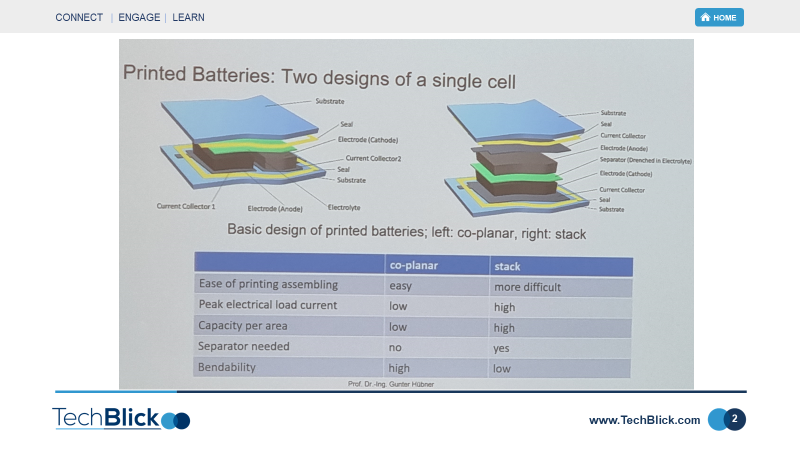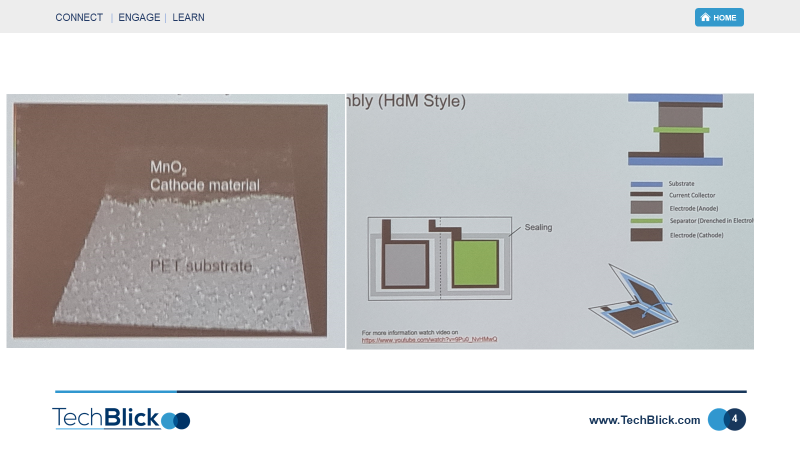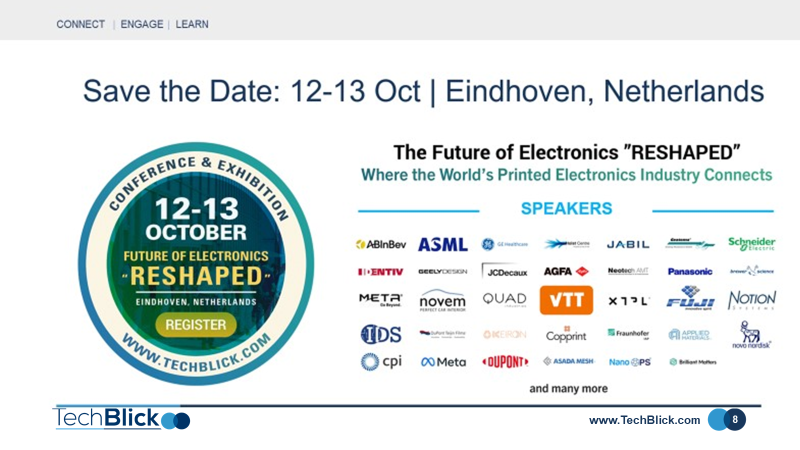Printed battery technology
- khashayar Ghaffarzadeh
- Sep 8, 2022
- 2 min read
Printed batteries offer thinness and flexibility, enabling new applications, but their production is deceivingly complex. Gunter Hübner from Stuttgart Media University offered some insights at the e-Swiss conference last week.
The first slide shows an excellent benchmarking of different battery chemistries for printed batteries. The Zinc/manganese dioxide system is the most popular option.
As shown in slide 2, we see that these batteries can be manufactured in two architectures: coplanar and stacked. The former is simpler to print and is more flexible, but offers lower performance.
In slide 3, a closer look at the layers in a stacked printed battery is offered. As seen here, even this so-called 'simple' device involves many printing step! Since Ag is not electrochemically inert, a carbon black layer is also printed.
The particles in the anode and cathode are typically in the 10-50um range and thus can only be screen printed. Note that the cathode is typically 1.5x thicker than the anode. The printed battery layers typically have 150um thickness and the batteries achieve something in the range of 2-6mAh per cm2. Furthermore, in printing them, strong adhesion of the electrodes to the current carriers is essential.
All these show how complicated it is to print even a simple zinc/manganese battery - it involves significant know-how and learning, which can not be achieved overnight!
The final slide shows an elegant clever approach to printing the system. Here, the materials are printed on a planar sheet and then folded to create the full battery stack.
This technology is now being commercialized by VARTA AG . It also has commercial orders in applications such as tracking items in the chemical industry.
To learn more about printed batteries join us on 12 & 13 October 2022 | Eindhoven, Netherlands at the TechBlick show- where the printed electronics community connects
www.TechBlick.com/electronicsreshaped













Comments